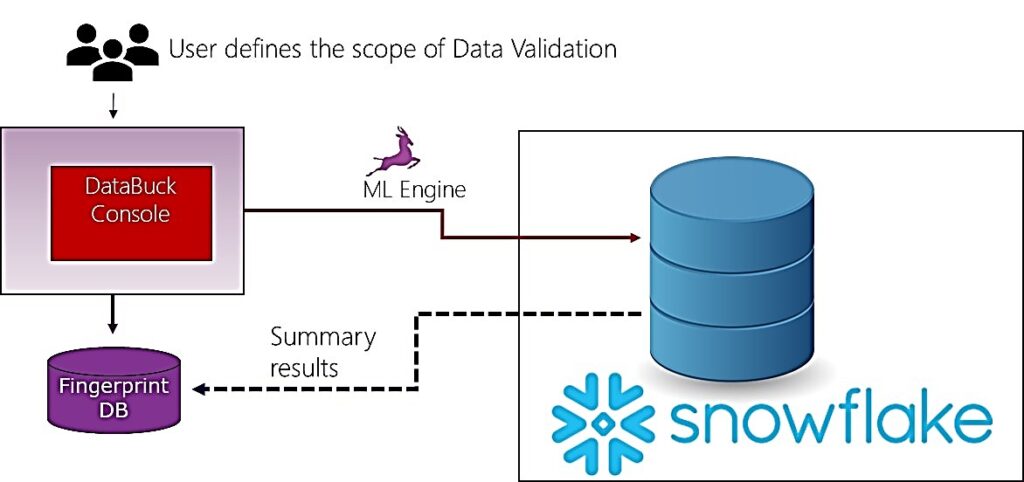
Angsuman Dutta
CTO, FirstEigen
Enhance AWS Glue Pipeline With Autonomous Data Validation
Data operations and engineering teams spend 30-40% of their time firefighting data issues raised by business stakeholders.
A large percentage of these data errors can be attributed to the errors present in the source system or errors that occurred or could have been detected in the data pipeline.
Current data validation approaches for the data pipeline are rule-based – designed to establish data quality rules for one data asset at a time—as a result, there are significant cost issues in implementing these solutions for 1000s of data assets/buckets/containers. Dataset-wise focus often leads to an incomplete set of rules or often not implementing any rules at all.
With the accelerating adoption of AWS Glue as the data pipeline framework of choice, the need for validating data in the data pipeline in real-time has become critical for efficient data operations and to deliver accurate, complete, and timely information.
This blog provides a brief introduction to DataBuck and outlines how to build a robust AWS Glue data pipeline to validate data as data moves along the pipeline.
What is DataBuck?
DataBuck is an autonomous data validation solution purpose-built for validating data in the pipeline. It establishes a data fingerprint for each dataset using its ML algorithm. It then validates the dataset against the fingerprint to detect erroneous transactions. More importantly, it updates the fingerprints as the dataset evolves over time thereby reducing the efforts associated with maintaining the rules.
DataBuck primarily solves two problems:
- Data Engineers can incorporate data validations as part of their data pipeline by calling a few python libraries. They do not need to have a priori understanding of the data and its expected behaviors (i.e. data quality rules)
- Business stakeholders can view and control auto-discovered rules and thresholds as part of their compliance requirements. In addition, they will be able to access the complete audit trail regarding the quality of the data over time
How Does DataBuck Enhance AWS Glue?
Integrating DataBuck with AWS Glue provides a robust, automated system to validate datasets in real-time, without manual rule-writing. Here’s how DataBuck enhances data validation:
- Freshness — determine if the data has arrived within the expected time of arrival.
- Completeness — determine the completeness of contextually important fields. Contextually important fields are identified using mathematical algorithms.
- Conformity — determine conformity to a pattern, length, and format of contextually important fields.
- Uniqueness — determine the uniqueness of the individual records.
- Drift — determine the drift of the key categorical and continuous fields from the historical information
- Anomaly — determine volume and value anomaly of critical columns
How DataBuck Works With AWS Glue?
In DataBuck, the user provides Snowflake connection information along with the database details and triggers the continuous data validation process. Once the data validation process is activated, DataBuck sends its ML engine to snowflake to analyze the data and identify data quality issues. Summary results are then presented to the user through the web console. At no point in this process, the user needs to write rules or move data out of snowflake.

Steps to Set Up DataBuck With AWS Glue
Using DataBuck within Glue job is a three-step process as shown in the following diagram

Step 1: Authenticate and Configure DataBuck

Step 2: Execute DataBuck

Step 3: Analyze the Result for the Next Step

Business Stakeholder Visibility
In addition to providing programmatic access to validate AWS dataset within the Glue Job, DataBuck provides the following results for compliance and audit trail
1. Data Quality of a Schema Overtime

2. Summary Data Quality Results of Each Table

3. Detailed Data Quality Results of Each Table

4. Detailed Data Profile of Each Table

5. Discovered Data Quality Rules for Each Table

Summary
DataBuck provides a secure and scalable approach to validate data within the glue job. All it takes is a few lines of code and you can validate the data on a going manner. More importantly, your business stakeholder will have full visibility to the underlying rules and can control the rules and rule threshold using a business user-friendly dashboard.
Incorporating DataBuck with AWS Glue simplifies the process of validating large data pipelines. With minimal code, real-time data validation, and full business visibility, your organization can ensure data accuracy and compliance, making it easier to act on reliable data insights.
If you’re looking to enhance your AWS Glue pipeline with autonomous validation, contact us for a free demo of DataBuck today.
Check out these articles on Data Trustability, Observability & Data Quality Management-
FAQs
Data validation ensures the accuracy, completeness, and reliability of the data flowing through the pipeline. In AWS Glue, where large amounts of data are processed, real-time validation helps prevent data errors from affecting downstream processes, leading to more trustworthy insights and decisions.
DataBuck integrates with AWS Glue by embedding into the ETL pipeline with minimal code. It uses machine learning to establish fingerprints of the datasets and continuously validate the data as it moves through the pipeline, detecting anomalies in real time. The process is simple, requiring only a few lines of Python code in your Glue job.
No, DataBuck’s machine learning engine automatically discovers and updates data validation rules based on the dataset's patterns and behaviors. This reduces the need for manual rule-writing and maintenance, making the process more efficient and scalable.
Business stakeholders gain full visibility into the data quality through a user-friendly dashboard. They can monitor data validation results over time, view audit trails, and control auto-discovered rules and thresholds. This enhances compliance and helps ensure that data governance standards are met.
Yes, DataBuck is designed to scale seamlessly with your data. It can handle thousands of datasets, data assets, or containers across AWS Glue pipelines, providing continuous validation without performance bottlenecks.
Yes, DataBuck is compatible with other data platforms such as Snowflake, Databricks, and Google BigQuery. It can be integrated into various cloud environments to provide autonomous data validation for a wide range of pipelines.
Getting started with DataBuck is easy. You can integrate it into your AWS Glue pipeline with just a few lines of Python code. For a step-by-step guide or a demo, contact us to learn how DataBuck can enhance your data validation processes.
Discover How Fortune 500 Companies Use DataBuck to Cut Data Validation Costs by 50%
Recent Posts
Get Started!



